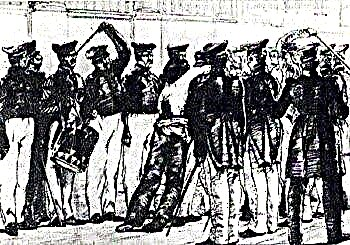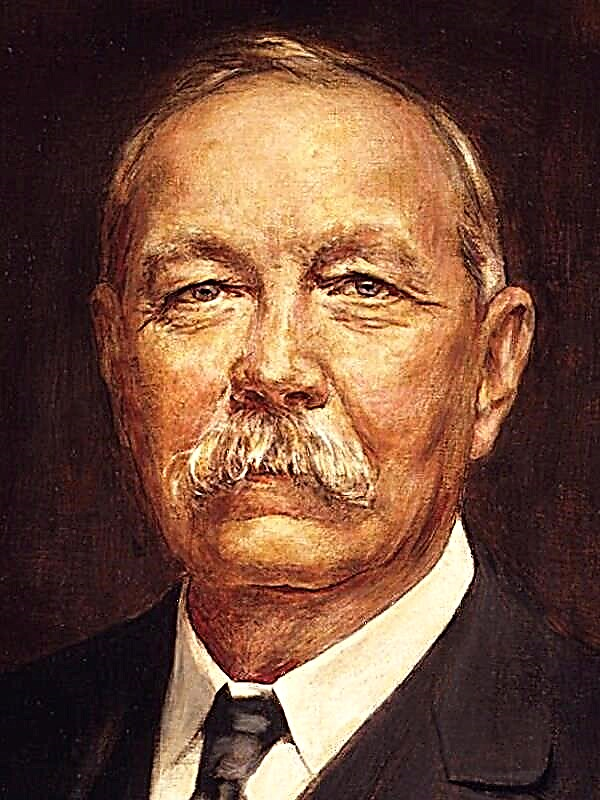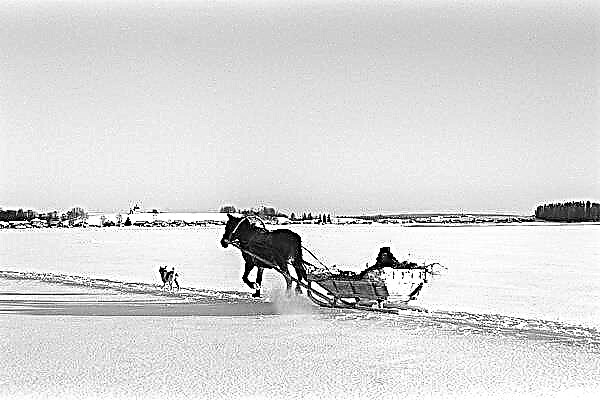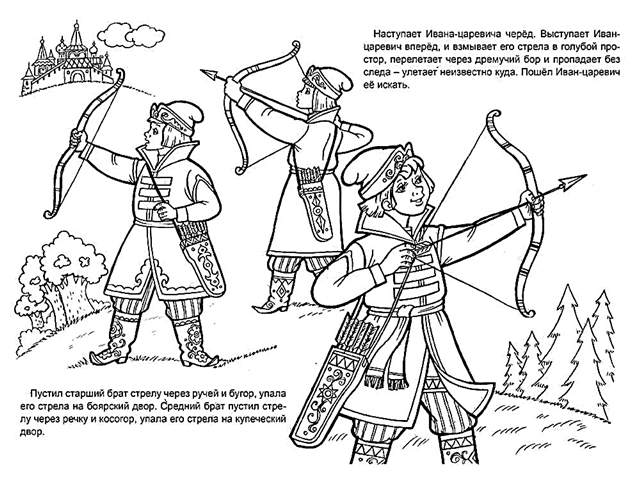Well-known to a wide readership work S.A. Yesenin's “Letter to a Woman” is quoted everywhere and everywhere: bloggers continually declare it by heart, broken hearts read and enjoy it, finding a reflection of their incredible suffering in the poetic text. Perhaps, only “I left my birthplace” is more popular and overtakes “Letter ...” in readers rating, but inferior in citation rating ... At this stage, the question arises as to why this poem was, is, and most likely , will be one of the most beloved among fans of Yesenin's work.
History of creation
The work was created in 1924 and, as many literary scholars believe, refers to a new stage in the poet’s work, in which Yesenin rethought his ideas of messages-works, in which the views on the future of the country are hidden.
During the writing of this poem, the poet is experiencing a break with his ex-wife - Zinaida Reich, to whom this work is dedicated. However, the reference is not only to the grief-beloved. There are other connotations associated with more global things, which I will discuss in more detail later.
Genre, size and direction
The genre of "Letters" was extremely popular among writers, and in particular it became famous during the period of the Silver Age of poetry, which belongs to the work of Sergei Alexandrovich. And, of course, the “Letter to the Woman” is perhaps one of the most popular “Letters” of our 21st century, although it was written in 1924.
Yesenin's work has the size of a free or alternative iambic, creating the impression of dimensional reasoning. It is curious that the longest sentences in each stanza put the right emphasis, i.e. pronounced with a certain excretory intonation. This intonation is not an exclamation or even a question: it in its own way, mentally and intuitively, draws attention to this particular place in the stanza.
The main characters and their characteristics
The author implies the main characters during the appeal: this is the woman herself, to whom the poem is dedicated, and, of course, the poet, who dedicates the work of her former lover. However, despite the fact that the reader cannot trace clearly defined personality characteristics, the writer nevertheless focuses on his “violent” temper and very quick-tempered character: “And I bent over the glass so that I would destroy myself without suffering about anyone drunken drunk. " Or:
Darling
I tortured you
You had a longing
In the eyes of the tired:
What am I showing you
Wasted himself in scandals.
Simultaneously with exponential temper, the heroine is far from noisy, but meek and humble:
I know you are not the one
You live
With a serious, smart husband;
That you don’t need our maya,
And I myself to you
Not a bit needed.
At times - once at the beginning of the poem - the poet speaks of a woman driven to a frenzy: "Something sharp was thrown into my face." But, apparently, the creator created these lines in a burning resentment against himself, as in fact he himself was the cause of discord between the spouses: his free and windy disposition made itself felt.
At the same time, the hero feels rather depressed, saying that he is "like a horse driven into soap, spurred by a bold rider." Despair, bordering on violent character, gives rise to internal anxiety in the poem, although the above-mentioned features appear to us in the grandeur of power reasoning.
Themes and Issues
- Love and separation. The lyrical hero regrets the lost feeling, bitterly complains that he has become “not a bit needed”, that she did not love him, and did not realize how much he was suffering for the fate of his fatherland. He is both offended and pained, because he realizes his guilt before the lady of the heart, who left him, based on the dissimilarity of their characters. They were opposite, and so much so that after an unsuccessful romance with the poet, the beauty preferred "a serious and intelligent husband." However, such a passion in her life will no longer be; she is tired of her, like the one who devotes farewell lines to her.
- The revolution. Yesenin compares the country with a ship: he defined the people as a place in the hold (tavern), the helmsman and sailors - “strong” people, apparently the Bolsheviks who seized power and sent the country “into the thick of the storm and blizzard” (in a civil war, presumably). But he does not know where to join him, this is the reason for his internal crisis. Apparently, he is one of those who “remained strong in pitching” because he does not want to “watch people's vomit,” that is, he himself is not bad on the deck, but he is not able to see how hard it is for others. In the tavern, he is trying to forget himself, like many people lost for themselves who have not found the truth on any of the warring parties.
- New power. “A horse spurred by a bold rider” is a direct indication of the pressure the poet is experiencing in new Russia. Officials sought to crush art to fit their ideology, and Yesenin felt this compulsion on himself when he began to declare himself “party line”, when censorship appeared, when poems and poems began to be made “on order” on the eve of holidays and memorable dates. It is no coincidence that he calls himself a "fellow traveler" and ironically announces that he gives praise to the helmsman. In such a situation, Sergei Alexandrovich realized his helplessness and filled this awareness with alcohol. “Crazy life” eased his burden of responsibility: there was nothing to ask from the joker and the drunkard of the authorities. Hence his reproaches to his beloved: she did not know what it was like for him to endure this oppression. He deeply hid his criticism of power in a love message - the nuts were so tight by 1924.
Meaning
The work is divided into two parts, opposite in time frame: bygone memories and real impressions. At the same time, the memories resonate with Russia's very rich past: the revolution. A parallel is curious: Yesenin’s struggle with his exalted and fiery temperament is compared with the violent events of 1917. In this context, it is extremely important to note: love for the poet is war. Ruthless and reckless, but completely useless: in the end, both lost.
The poem also contains the meaning of regret for the lost: he really is to blame for his ex-wife, being an overly scandalous person. Yesenin blames himself and no one else. Thus, the parallel can be traced here: it is known for certain that the writer comes from a simple peasant family, one of a thousand peasants who joined the proletariat in some numbers and so vehemently defended the leader of the revolution on a fateful day ... Does he blame everyone for this events? Maybe. And it is likely that the poet puts this connotation in the stanzas of his offspring.
Means of expression (trails)
The poem “Letter to a Woman” is the quintessence of various means of expression, as the poet uses the above reasoning to increase tension and inner anxiety. The clearest example is the use of rude and very screaming words: "vomited", "drunken intoxication", "vomiting". Yesenin also uses metaphors to more expressively influence the reader’s presentation: “I was like a horse ...”
Moreover, the poem uses open comparisons, such as: “Earth is a ship!”, And then the comparison is more a metaphor that embodies the revolutionary events of the past years: “... a direct thicket of storms and a blizzard directed it majestically.”
Avatars are an integral part of the system of means of expression in any work of art. So, Yesenin uses the aforementioned in this case: "Where does the rock of events carry us?" "Rock of events" carries us figuratively, directing and setting the trajectory of movement during the course of our life. However, he can’t “carry on hand” us in any case.
Criticism
In my opinion, Yesenin’s poem is a poem written during a period of regrettable sadness. His loss is akin to the fall of tsarist Russia - irreplaceable and, possibly, sunk into oblivion. The devastation in post-revolutionary Russia is the devastation of the poet’s spiritual spectrum, the events are the struggle against the negligent "I", the result of which is the collapse of family integrity. Perhaps the poem is too expressive and intimate, but only in this way we learn the true essence of poetic ideas: we recognize the muse - the first source of inspiration, the meaning of recent years and life views that Yesenin lived. The poem is ingenious in its essence: it combines moods that convey both the general decadent state of the people to which the poet is involved and self-personal in connection with the breakup. Deep emotionality is described by a power-law meditation on his thoughtless and harsh actions that created chaos in the soul.
In my opinion, the work is the brightest and most accurate map on which the poet’s most hidden bins are presented: his experiences, views and temperament, his family problems and spiritual defeats. It is generally accessible and clear: it is not written in white rhyme and does not form an infinite number of allegories on the theme of revolution. The poem is riddled with metaphors that can and should be thought of. Metaphors coming from personally-intimate memories and repentance. Thus, S.A. Yesenin thinks of the people as a whole, and himself as his integral part, spinning in a whirl of events.












